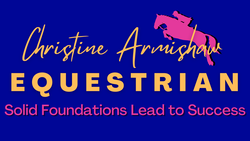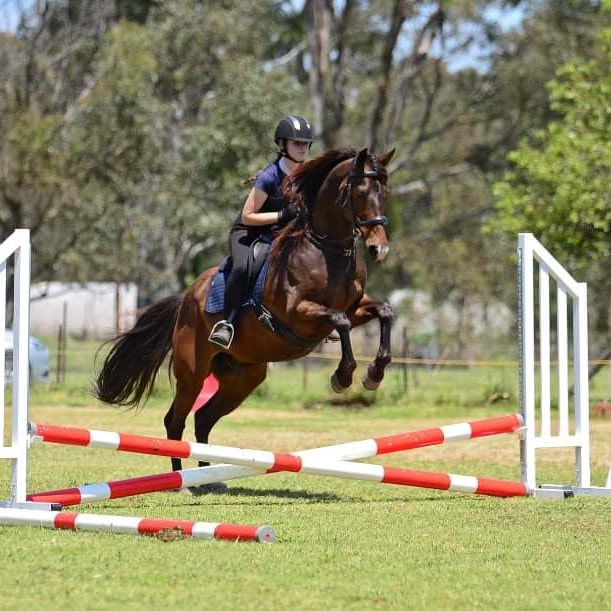|
A guide to non-heating weight-gain for Thoroughbred horses and other breeds that need to gain weightThis basic-but-effective diet plan is for anyone looking to add weight and improve horse condition, to keep your horse happy, healthy and probably most importantly, sane!
To get the best results from the below feeding plan, it is wise to ensure your horse's worming and dental care are up-to-date, as both of these factors will influence the effectiveness of your horse's ability to utilize the feed you provide him. Also, I've said it before, but I'll say it again, make sure he has adequate shelter and warmth so he his not burning up too much energy trying to keep himself warm; this can be in the form of a man-made shelter, good tree shelter and of course a warm, dry cover. OK, in to the feed. First up, hay. Hay is the number one thing that you need to focus on when first trying to put weight on your horse. To the untrained eye, hay can look like 'wispy, dry nothing'. But to your horse, hay is weight-gain gold. Horses need fibre to convert to fat stores and hay is fibre. So if you come out in the morning and your horse has well-cleaned up all his hay from the night before, your first step is to feed him more hay. Same thing if you come out in the evening and he has no hay left over from the morning. Rather than just standing around waiting for you, he could be eating hay and gaining weight. A good rule of thumb is that you need to feed about half a bale of hay, per horse, per day. Obviously you need to take into consideration the weight per bale, as they do vary a lot, but it's a good place to start. Bear in mind that is for weight-maintenance, so if you trying to get your horse to gain weight, you will need to feed more than that. Let me repeat this, because it is super important: the first thing you should focus your money and efforts into for weight-gain is in feeding hay. In an either/or situation of hay vs hard feed, hay will put more weight on your horse than any hard feed will without adequate hay in the diet. Feed your horse hay hay hay. Right, now moving on, the next thing to consider is hard feed. Hard feed is pretty much any food that is not grass or hay, that you feed separately to your horse. Below is an actual example of what I recommend, and what I also feed to my own horses. It can be varied to make it more or less 'heating', depending on your actual horse's requirements, and I'll give you those options too. NOTE: This diet is also designed to reduce anxious and hot-headed horse behaviour in times of high grass growth eg spring and autumn, and at these times it is best to ALSO reduce grass access right down and up the hay, so your horse is less affected by the sugar spikes the grass causes (like kids eating lollies at a birthday party, who then go a bit nuts). In some cases of full on, horrible horse behaviour, which is hard to deal with and potentially dangerous, you're best to remove all grass privileges and replace with hay while the grass is rapidly growing, then only return horse to the grass when it drys off, eg when the summer sun starts to stunt the grass growth and turn it a bit dry-looking. Example of daily feeding plan (of course in conjunction with meadow hay!)
>energy >B-group vitamins TIP: scoop = approx 1x level 2L ice cream container
>fibre >protein >calcium >many vitamins
>fat >fibre
>B-group vitamins >Vitamin E >Iron >Copper >Sulphur
>Iodine (so don't include IODISED salt in diet) >Essential trace elements
>Vitamin A
>Vitamin D
Swaps, add-ins & notes: >For extra non-heating fibre as an addition for more weight gain, add soaked beet pellets (sugar beet pellets with the sugar removed). >As mentioned, lucerne haylage - this be quite heating, and can be swapped out for 2x scoops meadow chaff to keep the fibre content, however SALT will help cancel-out the 'hotness' it can cause in your horse >You can also add up to 1x cup of vegetable oil for extra weight gain. Rice bran oil is natures natural steriod, and so will provide the best results, but other vegetable oils are also effective. >If the final feed you mix up is heavier than 2kg, you are better off to split it over 2-3 feeds, so your horse had adequate opportunity to digest everything fully, and not just poo it out! This feed regime is not the be-all and end-all for all horses, but is a great place to start. If in doubt, seek the advice of a professional equine veterinarian. The only way to know for sure what your horse is high-in or lacking in, is to have a comprehensive blood test taken and analysed. Comments are closed.
|
AuthorChristine Armishaw: Archives
November 2020
Categories |
LocationContact |
|

 RSS Feed
RSS Feed
